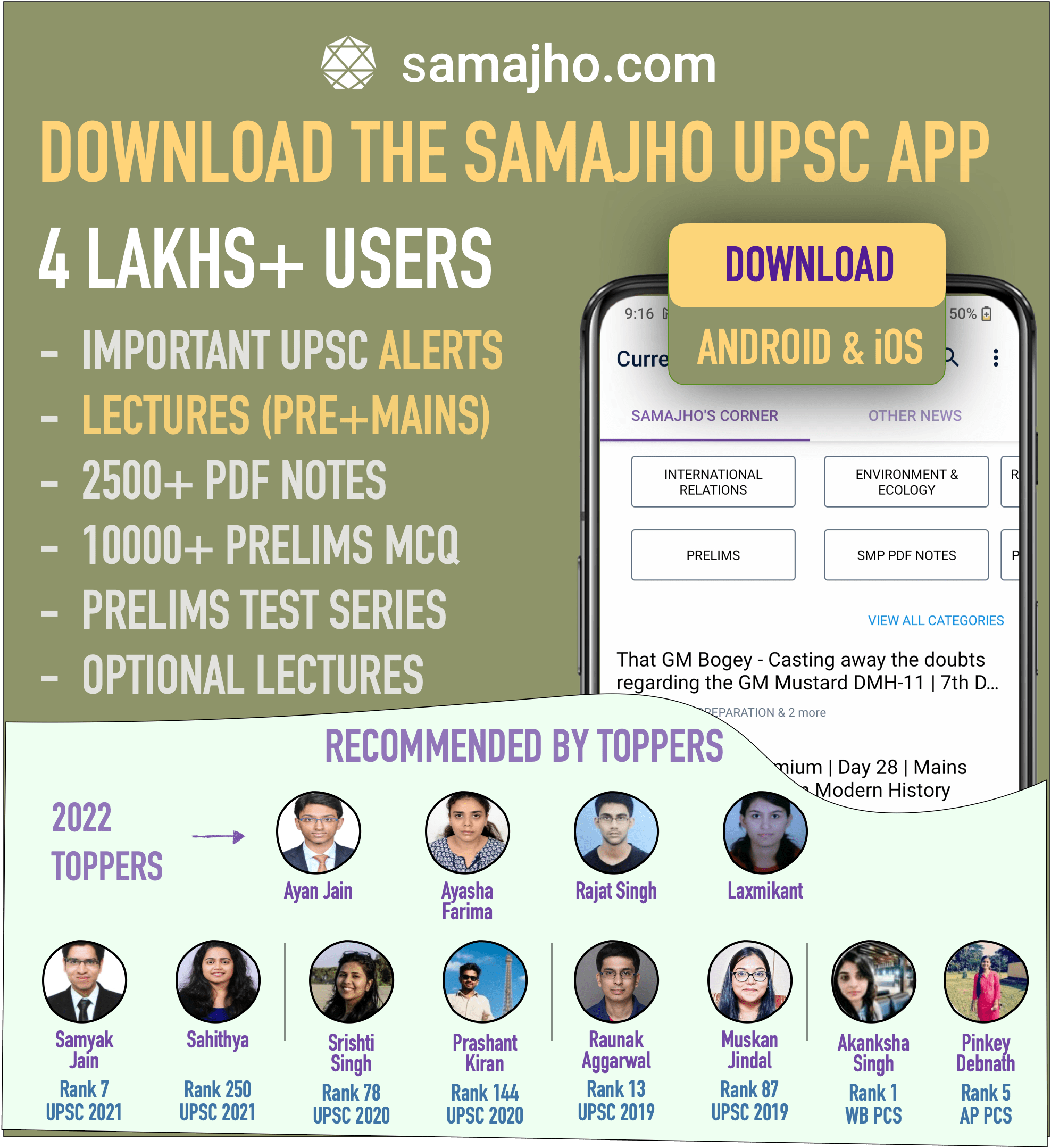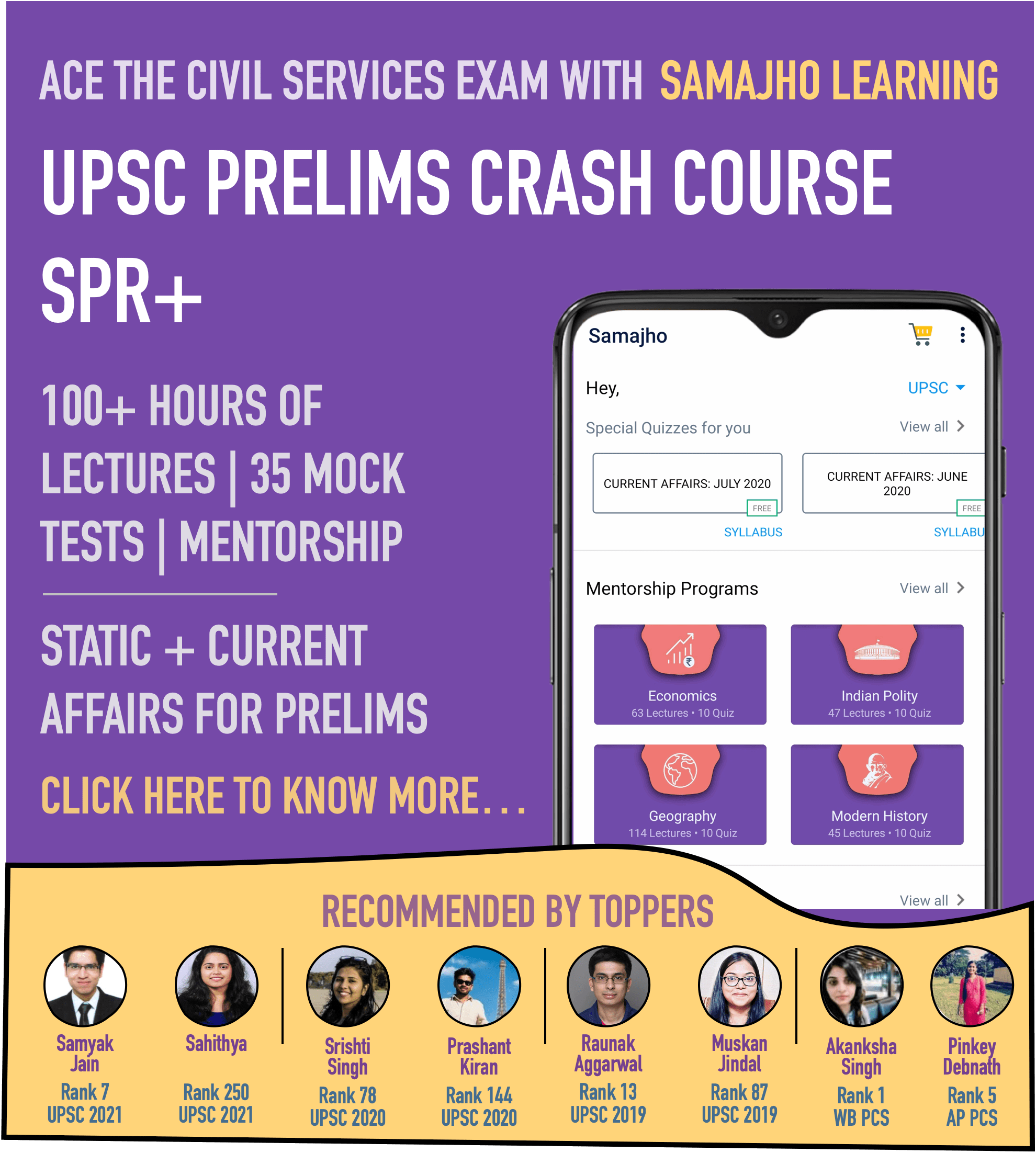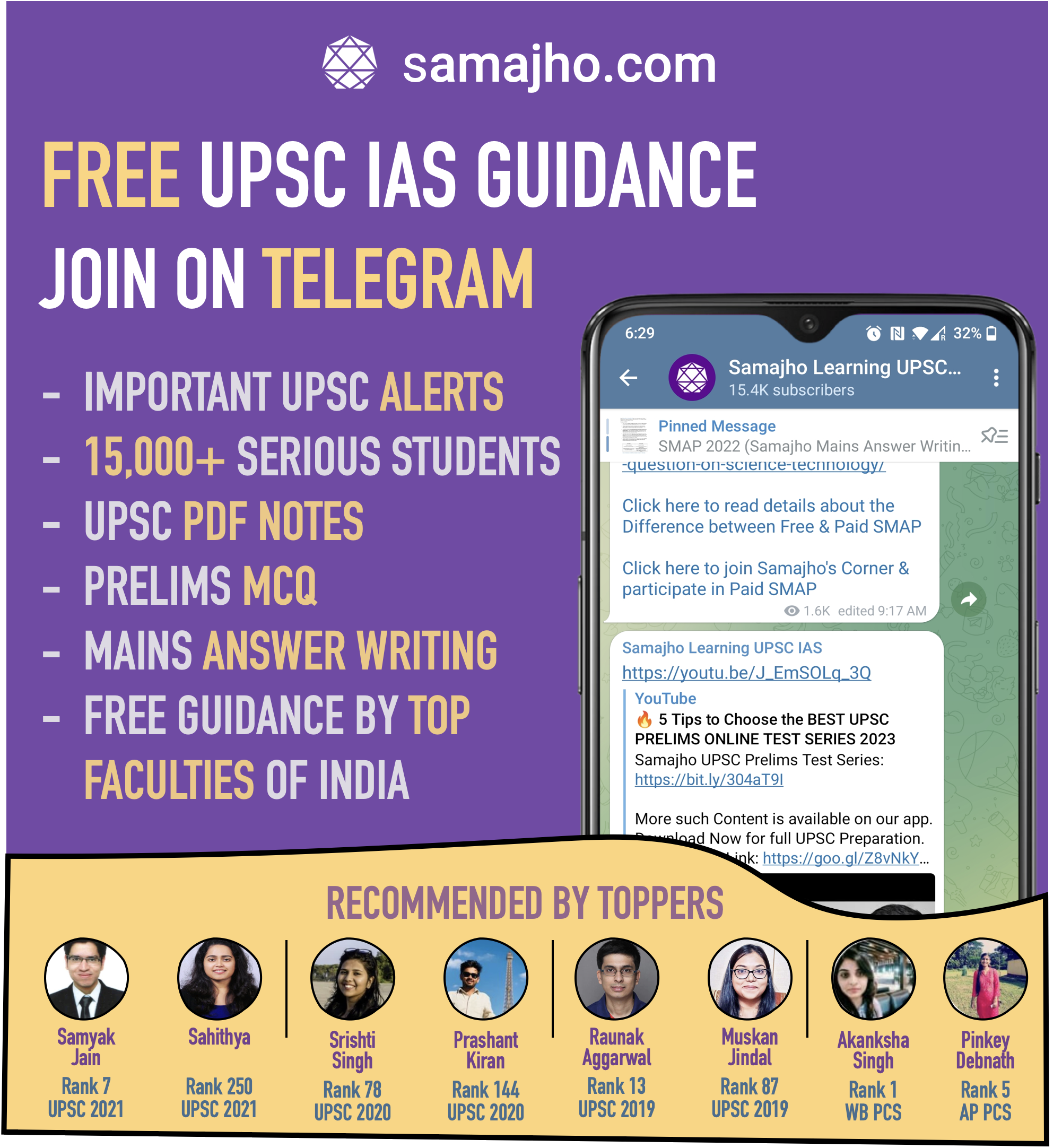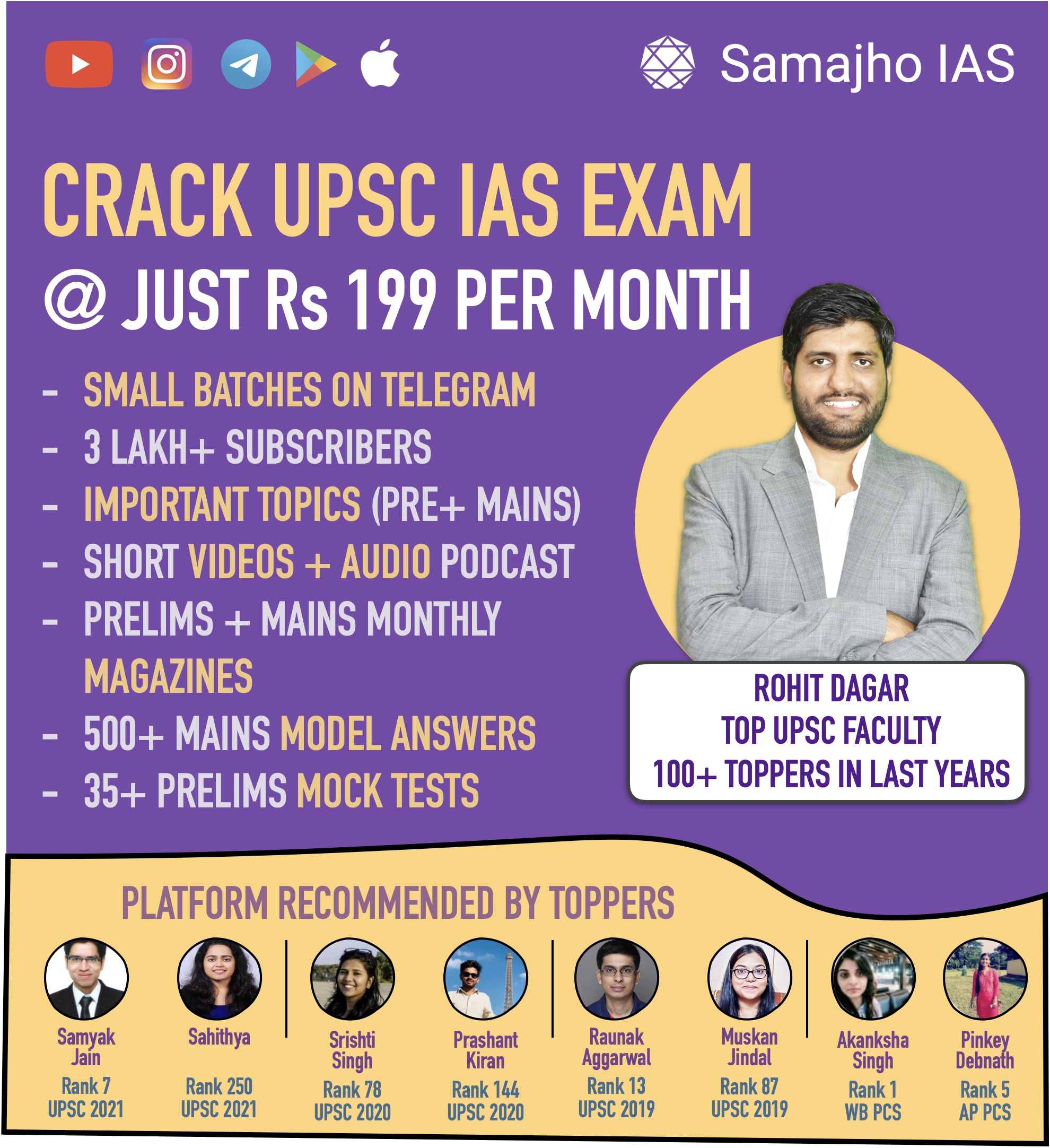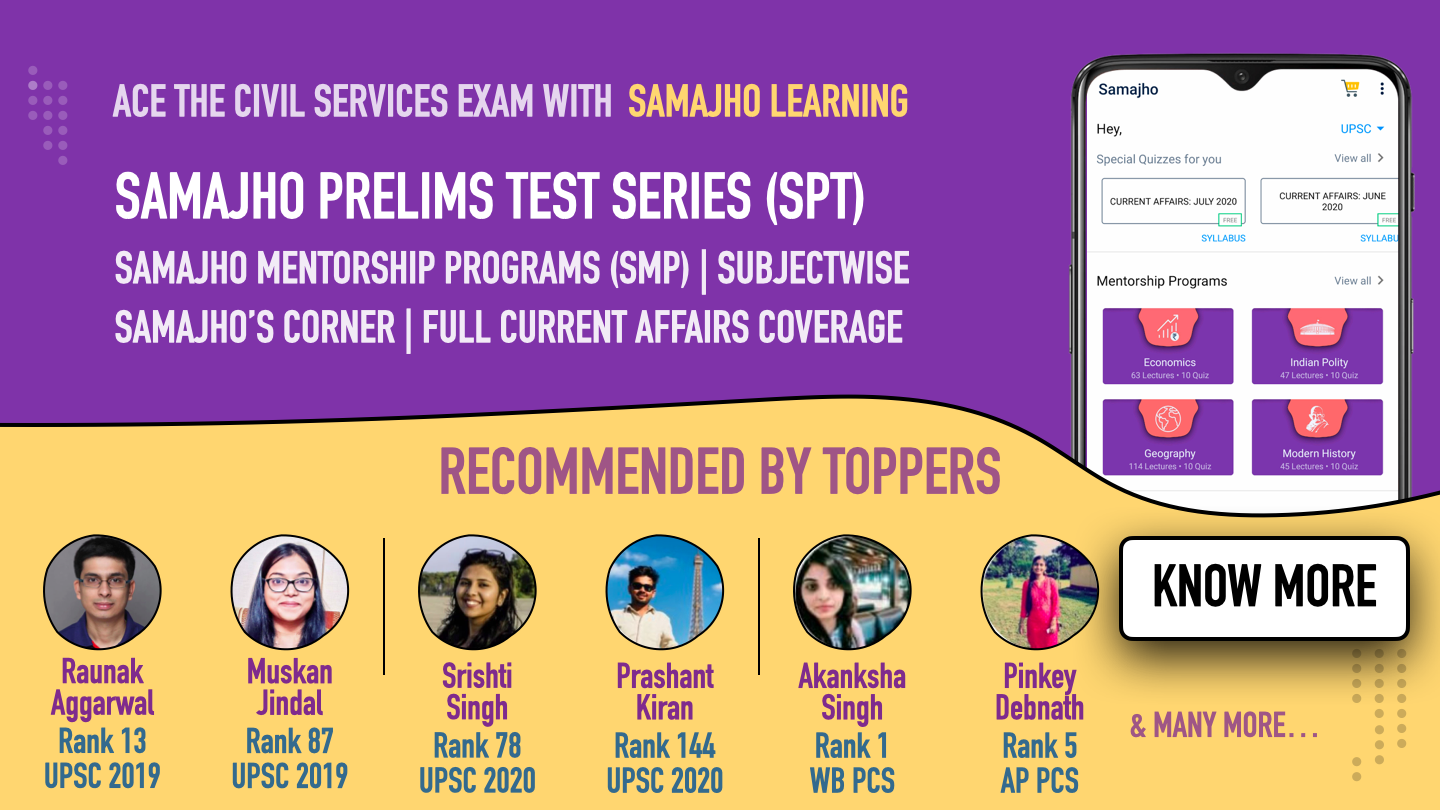UPSC Daily Editorial Analysis | End Child Marriage | 15 June 2022
Samajho's Android app | Samajho's IOS app | Youtube Channel | Telegram Channel | Instagram Channel

What the article is about?
- Talks about the way to end child marriage and its correlation with increasing the age of marriage.
Syllabus: GS-I Society, GS-II Social Justice, Child marriage, Health impacts
Way to end Child marriage:
- Several empirical studies from South Asia establish a significant association between early marriage and adverse health and educational outcomes of women and their children.
- Studies associate early marriage of women with early pregnancy, lower likelihood of accessing ante-natal care, higher risks of maternal morbidity and mortality, poor nutritional status of women and poor nutritional and educational outcomes of children.
- It is also abetted by structural factors, including social norms, poverty, and women’s education.
- It is because of social norms in many regions and cultures that parents begin preparations for a girl’s marriage once she has reached menarche.
- Equally, a large proportion of child marriages take place primarily because of poverty and the burden of the huge costs of dowry associated with delayed marriages.
- NFHS-5 data show that about 25% of women aged 18-29 years married before the legal marriageable age of 18. The proportion has declined only marginally from NFHS-4 (28%). Expectedly, the prevalence is higher in rural than urban India (28% and 17%, respectively).
- 39% of child marriages in India take place among Adivasis and Dalits. The share of advantaged social groups is 17% and the remaining share is of Other Backward Classes.
- In terms of household wealth, 58% of these marriages take place among the poorest wealth groups (bottom 40%), about 40% of them take place among the middle 50% and only 2% of them take place among the top 10% of wealth groups. Only 4% of child marriages in India take place among women who have completed more than 12 years of education
- Prohibition of Child Marriage (Amendment) Bill, 2021, fixes 21 years as the marriageable age for women.
- While 27% of illiterate women who married before 18 years are underweight (Body Mass Index be- low 18.5), the proportion is 24% for illiterate women who married at the age of 21 years. A high proportion (64%) of illiterate women are anaemic, in terms of iron deficiency, irrespective of their difference in age at marriage
Way Forward:
- The health dividend emanating from women’s increased age at marriage is not imminent.
- Increasing the age of marriage without a commensurate improvement in women’s education is least likely to yield better health and nutritional outcomes. Instead, it might adversely impact the poor and illiterate.
- The fact that about one-fourth of women (18-29 years) in India have married before 18 years despite the law tells us that legally increasing the age of marriage may not fully prevent child marriages.
- By contrast, much of the benefits can be reaped by ensuring that women complete education at least up to 12 years.
- The case of Bangladesh shows that improving women’s education and imparting modern skills to them that increase their employability reduces child marriage and improves health and nutrition.
- Also, schemes which ease the financial burden of marriage but the eligibility criteria of which should essentially link to educational attainment in addition to age demand attention – Janani Suraksha Yojana
Recent Articles
- An exchange – Analyzing the Vaibhav Fellowship Program | 26 January 2024 | UPSC Daily Editorial Analysis
- India’s problem — different drugs, identical brand names – Drug Name Confusion Threatens Patient Safety in India | 25 January 2024 | UPSC Daily Editorial Analysis
- The truth about India’s booming toy exports – Protectionism or Productivity? | 24 January 2024 | UPSC Daily Editorial Analysis
- Tax contribution by States needs to be revisited – Time to Recognize State Efficiency through Tax Contribution | 23 January 2024 | UPSC Daily Editorial Analysis
- A revival of the IMEC idea amid choppy geopolitics – Could India-Middle East-Europe Economic Corridor (IMEC) become the New Silk Road? | 22 January 2024 | UPSC Daily Editorial Analysis
- Gearing up for change – Monsoon Trends in India: Analyzing the Impact on Agriculture and Climate Resilience | 20 January 2024 | UPSC Daily Editorial Analysis
- Crafting a new phase in India-U.K. defence ties – Strengthening India-U.K. Defense Cooperation | 19 January 2024 | UPSC Daily Editorial Analysis
- Turning around Indian Ports – Enhancing India’s Global Competitiveness through Port Efficiency | 18 January 2024 | UPSC Daily Editorial Analysis
- A dated urban vision – Mumbai Trans Harbour Link: A Dated Mode of City-Making from Times Past | 17 January 2024 | UPSC Daily Editorial Analysis
- Tensions in Red Sea – Red Sea Threats Disrupt India’s Trade Flows | 16 January 2024 | UPSC Daily Editorial Analysis
Popular Articles
- UPSC CSE 2022 Mains GS 1 Paper Model Answers
- Model Answers for UPSC CSE 2021 GS 2 Paper
- SPR 2023 | SPECIES IN NEWS
- UPSC CSE 2023 Mains GS 2 Paper Model Answers
- Model Answers for UPSC CSE 2020 GS 2 Paper
- UPSC CSE 2023 Mains GS 1 Paper Model Answers
- PDS: objectives, functioning, limitations, revamping
- Land Revenue System during British rule in India
- Govt policies & interventions for development in various sectors, and issues arising out of their design and implementation
- UPSC CSE 2022 Mains GS 2 Paper Model Answers
Popular Topics
ART & CULTURE
CASE STUDIES
COMMITTEES & SUMMITS
DISASTER MANAGEMENT
ECONOMICS
ECONOMICS PREMIUM
ECONOMICS STATIC
ECONOMIC SURVEY
EDITORIAL
ENVIRONMENT & ECOLOGY
ENVIRONMENT PREMIUM
ETHICS
GEOGRAPHY
GEOGRAPHY PREMIUM
GEOGRAPHY STATIC
HEALTH
HISTORY
HISTORY PREMIUM
HISTORY STATIC
INDIAN POLITY
INDIAN POLITY PREMIUM
INDIAN POLITY STATIC
INTEGRITY & APTITUDE
INTERNAL SECURITY & DEFENSE
INTERNATIONAL RELATIONS
LITE SUBSCRIPTION PREMIUM
MAINS
MAINS CORNER PREMIUM
PLUS SUBSCRIPTION PREMIUM
POLITY & GOVERNANCE
PRELIMS
PRELIMS CURRENT AFFAIRS MAGAZINE
PRO SUBSCRIPTION PREMIUM
REPORTS
SAMAJHO'S CORNER PREMIUM
SAMAJHO ANALYSIS
SAMAJHO CORNER PREMIUM
SCIENCE & TECHNOLOGY
SELF PREPARATION
SMAP ANSWER WRITING
SOCIETY
SPR
SYLLABUS
TELEGRAM
YOJANA GIST
